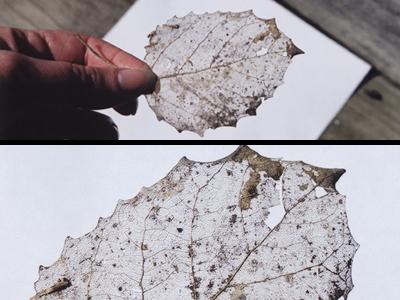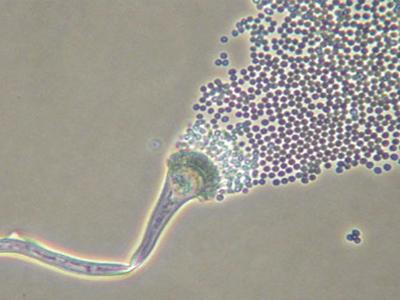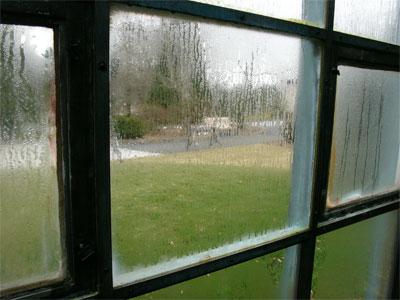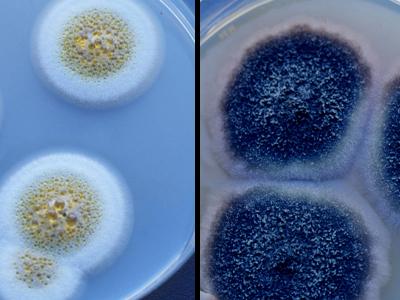Mold Course Chapter 1:
Introduction to Molds
- What Molds Are
- What Mold Needs to Grow
- Health Effects That May Be Caused by Inhaling Mold or Mold Spores
- Mycotoxins and Health Effects
- The Color of Mold
- Moldy Smell
- Biocides
Lesson 1 - What Molds Are
Molds are organisms that may be found indoors and outdoors. They are part of the natural environment and play an important role in the environment by breaking down and digesting organic material, such as dead leaves. Also called fungi or mildew, molds are neither plants nor animals; they are part of the kingdom Fungi.
Molds can multiply by producing microscopic spores (2 - 100 microns [µm] in diameter), similar to the seeds produced by plants. Many spores are so small they easily float through the air and can be carried for great distances by even the gentlest breezes. The number of mold spores suspended in indoor and outdoor air fluctuates from season to season, day to day and even hour to hour.
Mold spores are ubiquitous; they are found both indoors and outdoors. Mold spores cannot be eliminated from indoor environments. Some mold spores will be found floating through the air and in settled dust; however, they will not grow if moisture is not present.
Mold is not usually a problem indoors — unless mold spores land on a wet or damp spot and begin growing. As molds grow they digest whatever they are growing on. Unchecked mold growth can:
- Damage buildings and furnishings
- Rot wood
- Damage drywall
- Cause structural damage to buildings
- Cause cosmetic damage, such as stains, to furnishings
The potential human health effects of mold are also a concern. It is important, therefore, to prevent mold from growing indoors.
Lesson 2 - What Mold Needs to Grow
To grow indoors, mold needs moisture and food. Moisture is the most important factor influencing mold growth indoors. Controlling indoor moisture helps limit mold growth.
Moisture control is the key to mold control.
Mold does not need a lot of water to grow. A little condensation, in a bathroom or around a window sill, for example, can be enough. Common sites for indoor mold growth include:
- Bathroom tile and grout
- Basement walls
- Areas around windows
- Near leaky water fountains
- Around sinks
Common sources of water or moisture include:
- Roof leaks
- Condensation due to high humidity or cold spots in a building
- Slow leaks in plumbing fixtures
- Humidification systems
- Sprinkler systems
- Floods
Besides moisture, mold needs nutrients, or food, to grow. Mold can grow on virtually any organic substance. Most buildings are full of organic materials that mold can use as food, including:
- Paper
- Cloth
- Wood
- Plant material
- Soil
In most cases, temperature is not an issue; some molds grow in warm areas, while others prefer cool locations such as bread stored in a refrigerator. Often, more than one type of mold can be found growing in the same area, although conditions such as moisture, light and temperature may favor one species of mold over another.
Buildings that have been heavily damaged by flood waters should be assessed for structural integrity and remediated by experienced professionals. Please note that the guidelines covered in this course were developed for damage caused by clean water (not flood water, sewage, or other contaminated water).
For more information see:
Lesson 3 - Health Effects That May Be Caused by Inhaling Mold or Mold Spores
Inhalation exposure to mold indoors can cause health effects in some people. Molds produce:
- Allergens (substances that can cause allergic reactions)
- Irritants
- Potentially toxic substances or chemicals (mycotoxins)
Inhaling or touching mold or mold spores may cause allergic reactions in sensitive individuals. Mold does not have to be alive to cause an allergic reaction. Dead or alive, mold can cause allergic reactions in some people.
Allergic Reactions, Asthma Attacks, Irritant Effects
Allergic reactions to mold are common and can be immediate or delayed. Repeated or single exposure to mold, mold spores, or mold fragments may cause non-sensitive individuals to become sensitive to mold, and repeated exposure has the potential to increase sensitivity. Allergic responses include hay fever-like symptoms such as:
- Headache
- Sneezing
- Runny nose
- Red eyes
- Skin rash (dermatitis)
Molds can cause asthma attacks in people with asthma who are allergic to mold. In addition, whether or not individuals are allergic to mold, molds can irritate:
- Eyes
- Skin
- Nose
- Throat
- Lungs
Other Health Effects
Breathing in mold may also cause hypersensitivity pneumonitis, an uncommon disease that resembles bacterial pneumonia. In addition, mold exposure may result in opportunistic infections in persons whose immune systems are weakened or suppressed.
When mold grows indoors, the occupants of a building may begin to report odors and a variety of symptoms including:
- Headaches
- Difficulty breathing
- Skin irritation
- Allergic reactions
- Aggravated asthma symptoms
These and other symptoms may be associated with exposure to mold. But all of these symptoms may be caused by other exposures or conditions unrelated to mold growth. Therefore, it is important not to assume that, whenever any of these symptoms occurs, mold is the cause.
For more detailed information on mold and its health effects, consult:
- A health professional
- Your state or local health department
- Resource List for Public and Private Organizations Dealing with Environmental Exposures
Damp Buildings
Although mold is frequently found in damp buildings, it is not the only potential contaminant — biological contaminants other than mold, and non-biological contaminants are often present and may also cause health effects. Damp buildings may attract rodents and other pests. Damp or wet building components and furnishings may release chemicals indoors.
Potential contaminants in damp or wet buildings include:
- Bacteria
- Dust mites
- Cockroaches and other pests
- Chemicals emitted by damp building materials and furnishings
For more information on damp buildings and health effects, see the 2004 Institute of Medicine Report, Damp Indoor Spaces and Health, published by The National Academies Press.
Lesson 4 - Mycotoxins and Health Effects
As molds grow, some (but not all) of them may produce potentially toxic byproducts called mycotoxins under some conditions. Some of these molds are commonly found in moisture-damaged buildings. More than 200 mycotoxins from common molds have been identified, and many more remain to be identified. The amount and types of mycotoxins produced by a particular mold depends on many environmental and genetic factors. No one can tell whether a mold is producing mycotoxins just by looking at it.
Some mycotoxins are known to affect people, but for many mycotoxins little health information is available. Research on mycotoxins is ongoing. Exposure to mycotoxins can occur from inhalation, ingestion and skin contact. It is prudent to avoid unnecessary inhalation exposure to mold.
For more information on mycotoxins, see the 2004 Institute of Medicine Report, Damp Indoor Spaces and Health, published by The National Academies Press in Washington, DC.
Lesson 5 - The Color of Mold
Molds come in many colors including white. "Black mold" is not a species or specific kind of mold, and neither is "toxic mold." Sometimes the news media use the terms "toxic mold" and "black mold" to refer to molds that may produce mycotoxins or for a specific mold, Stachybotrys chartarum. Molds that produce mycotoxins are often referred to as toxigenic fungi.
Lesson 6 - Moldy Smell
Some compounds produced by molds have strong smells and are volatile and quickly released into the air. These compounds are known as microbial volatile organic compounds (mVOCs). Because mVOCs often have strong or unpleasant odors, they can be the source of the "moldy odor" or musty smell frequently associated with mold growth. A moldy odor suggests that mold is growing in the building and should be investigated.
The health effects of inhaling mVOCs are largely unknown, although exposure to mVOCs has been linked to symptoms such as:
- Headaches
- Nasal irritation
- Dizziness
- Fatigue
- Nausea
More research is needed to determine whether there are any human health effects from non-occupational indoor exposures to mVOCs.
Lesson 7 - Biocides
Biocides are substances that can destroy living organisms. The use of a biocide or a chemical that kills organisms such as mold (chlorine bleach, for example) is not recommended as a routine practice during mold cleanup. There may be instances, however, when professional judgment indicates their use (for example, when immune-compromised individuals are present).
In most cases, it is not possible or desirable to sterilize an area; a background level of mold spores will remain, but these spores will not grow if the moisture problem has been resolved. If disinfectants or biocides are used, always ventilate the area and exhaust the air to the outdoors. Never mix chlorine bleach with other cleaning solutions or with detergents that contain ammonia because toxic fumes could be produced.
Please note: Dead mold is allergenic and may cause allergic reactions and other health effects in some individuals, so it is not enough to simply kill the mold. It must also be removed.






